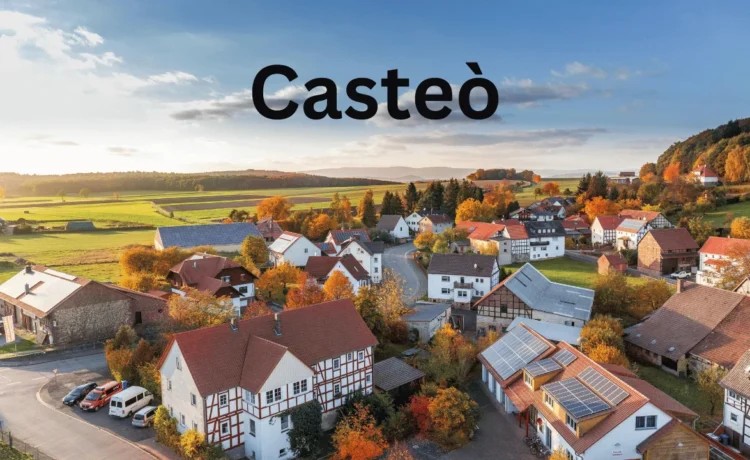Casteò, an integral part of many societies, holds a rich tapestry of tradition and history. Originating from ancient times, its evolution has shaped societal structures and norms across cultures and continents. Casteò finds its roots in the stratification of society based on occupation, lineage, and social status. Its origins can be traced back to early civilizations where individuals were categorized into distinct groups.
Evolution Over Time
Over centuries, the Casteò system has undergone significant transformations, adapting to changing societal dynamics and cultural influences. From its early rigid structure to more fluid classifications, the concept of Casteò has evolved alongside human civilization.
Casteò System: Structure and Function
Central to the Casteò system is its hierarchical order, with individuals placed into specific groups based on birth and societal roles. Each Casteò carries its own set of privileges, responsibilities, and restrictions, shaping interactions and relationships within society.
Hierarchical Order
The Casteò system typically comprises four main categories: Brahmins (priests and scholars), Kshatriyas (warriors and rulers), Vaishyas (traders and merchants), and Shudras (laborers and service providers). Beyond these primary divisions, there exist numerous sub-Casteòs and communities, further delineating societal hierarchy.
Role in Society
Casteò dictates various aspects of life, including marriage, occupation, and social interactions. It serves as a framework through which individuals navigate societal expectations and obligations, influencing their opportunities and experiences.
Casteò in Different Cultures and Regions
While commonly associated with the Indian subcontinent, Casteò systems have been prevalent in diverse cultures and regions around the world, albeit under different names and structures.
Indian Casteò System
The Indian Casteò system, known as Varna Vyavastha, remains one of the most well-known examples of Casteò-based societies. Its complex hierarchy and interwoven social fabric have shaped Indian civilization for millennia, influencing everything from religion to politics.
Casteò Systems Worldwide
Beyond India, similar systems of social stratification exist in various forms across regions such as Africa, Southeast Asia, and parts of Europe. Though distinct in their manifestations, these Casteò systems share common themes of social division and hierarchy.
Cultural Practices Associated with Casteò
Casteò is deeply intertwined with cultural practices, encompassing rituals, traditions, and societal norms that have endured for generations.
Rituals and Traditions
From birth ceremonies to funeral rites, Casteò dictates the observance of various rituals and customs within communities. These practices reinforce social identity and cohesion, fostering a sense of belonging among Casteò members.
Festivals and Celebrations
Casteò-based festivals and celebrations play a significant role in cultural expression and community bonding. These events often involve elaborate ceremonies, feasts, and religious rituals, serving as occasions for social gathering and reflection.
Impact of Casteò on Daily Life
The influence of Casteò permeates every aspect of daily life, shaping individuals’ experiences and opportunities in profound ways.
Social Interactions
Casteò influences social hierarchies and relationships, dictating whom one can associate with and how they are perceived within society. Inter-Casteò interactions may be governed by norms of respect or segregation, depending on prevailing customs and traditions.
Occupational Patterns
Occupational roles are often predetermined by Casteò, with certain professions traditionally associated with specific Casteò groups. While modernization has led to greater occupational mobility, remnants of Casteò-based segregation persist in some sectors of society.
The Controversy Surrounding Casteò
Despite its deep-rooted significance, Casteò remains a subject of controversy and debate, both within affected communities and on a global scale.
Modern Perspectives
Critics argue that Casteò perpetuates inequality and discrimination, inhibiting social mobility and fostering prejudice and exclusion. Calls for reform and abolition of Casteò-based systems have gained traction in recent years, spurred by movements for social justice and human rights.
Debates and Discussions
Scholars and activists engage in ongoing discussions about the relevance and implications of Casteò in contemporary society. These dialogues explore the complexities of Casteò dynamics and seek to address systemic injustices through education, advocacy, and policy reform.
Casteò in the Modern World: Challenges and Adaptations
In the face of changing social landscapes and global interconnectedness, Casteò-based communities navigate new challenges while preserving their cultural heritage.
Changing Dynamics
Globalization and urbanization have brought about shifts in traditional Casteò structures, leading to greater social mobility and cultural exchange. Younger generations, in particular, are redefining their identities and challenging conventional notions of Casteò.
Efforts towards Equality
Amidst calls for social reform, initiatives aimed at promoting Casteò equality and inclusivity have emerged. From grassroots activism to government policies, efforts are underway to address Casteò-based discrimination and promote social cohesion and justice.
Conclusion: Embracing Diversity in Cultural Heritage
In conclusion, the rich cultural heritage of Casteò reflects the complexity and diversity of human societies. While acknowledging its historical significance, it is essential to embrace inclusivity and equality, transcending barriers imposed by Casteò and fostering a more equitable and harmonious world.
Appreciation of Casteò’s Role
By recognizing the contributions of Casteò-based cultures to our shared heritage, we honor the resilience and creativity of human civilization throughout history.
Moving Towards Inclusivity
As we strive towards a future guided by principles of equality and dignity for all, let us celebrate the richness of cultural diversity while working together to dismantle barriers that divide us.
Unique FAQs
- Is Casteò still relevant in modern society?
- While the influence of Casteò varies across different regions and communities, its legacy continues to shape social dynamics and individual experiences in many parts of the world.
- Can Casteò-based discrimination be eradicated entirely?
- Achieving complete eradication of Casteò-based discrimination requires concerted efforts from both individuals and institutions, including education, advocacy, and policy reform.
- How do Casteò systems differ from one culture to another?
- While the fundamental principles of social stratification may share similarities, the specific structures and practices of Casteò systems vary significantly across different cultures and historical contexts.





